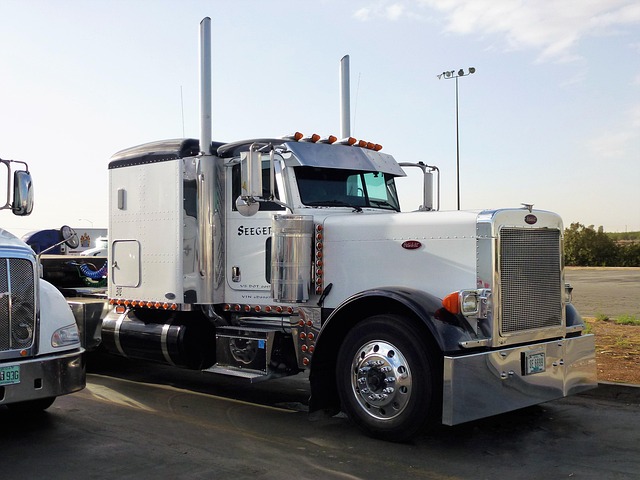Looking to register your car in California? This comprehensive guide breaks down the process step-by-step. From understanding essential requirements to securing your license plate, we cover everything you need to know. We highlight crucial aspects like gathering necessary documents and navigating the DMV’s VIN (Vehicle Identification Number) verification process. By following these clear instructions, you’ll be on your way to a smooth car registration experience in California.
- Understand California Car Registration Requirements
- Gather Necessary Documents for Vehicle Registration
- Visit the DMV: Steps for Vehicle Identification Number (VIN) Verification
- Complete Application Forms for Car Registration
- Pay Registration Fees and Receive Your License Plate
Understand California Car Registration Requirements

Before registering your car in California, it’s crucial to understand the state’s specific requirements for car registration. The California Department of Motor Vehicles (DMV) mandates several steps to ensure vehicle authenticity and safety. One key step is the DMV VIN verification process, which involves checking the Vehicle Identification Number (VIN) of your car against records to confirm its history and ensure it meets environmental and safety standards.
This verification process includes a thorough inspection of the vehicle’s details, including its odometer reading, accident history, and outstanding recalls. Additionally, you can opt for a mobile VIN verification or inspect the VIN yourself using the DMV’s guidelines. This proactive approach not only simplifies the registration process but also safeguards against potential issues that might arise from unregistered or altered vehicles.
Gather Necessary Documents for Vehicle Registration

Before you begin the registration process, ensure you have all the essential documents. In California, the Department of Motor Vehicles (DMV) requires specific paperwork for vehicle registration. The key document is the Vehicle Identification Number (VIN) verification report. This report confirms the vehicle’s identity and history, ensuring it’s not stolen or has any outstanding issues. You can obtain this through a vin inspection or by using a mobile vin verification service, which allows you to check the VIN online or via a mobile app.
Additionally, gather other important papers like the title or registration certificate from the previous owner, proof of insurance, and a valid driver’s license. These documents are crucial for verifying your identity and ensuring the vehicle’s legal status during the registration at the DMV.
Visit the DMV: Steps for Vehicle Identification Number (VIN) Verification

To initiate the registration process in California, the first step is to visit your local Department of Motor Vehicles (DMV) office or use their online services. One crucial aspect of this process involves Vehicle Identification Number (VIN) verification. This step ensures that your car’s details match the information on record and aids in preventing fraud. At the DMV, you’ll need to provide proof of ownership, vehicle identification papers, and any applicable fees.
During the VIN verification process, a trained official will cross-check your car’s unique VIN against their database. This can be done either through manual inspection at the DMV or via mobile vin inspection services for added convenience. By utilizing these methods, you streamline the registration, ensuring a smoother experience and faster turnaround times.
Complete Application Forms for Car Registration

To register your car in California, you’ll need to complete several application forms at the DMV (Department of Motor Vehicles). The process involves providing detailed information about your vehicle and its history. Start by filling out Form DMV-140, which requests essential data such as your personal details, vehicle specifications, and previous ownership records. Ensure all information is accurate and up-to-date for a smooth registration process.
One crucial step in this process is the DMV vin verification, where you’ll need to provide the Vehicle Identification Number (VIN) of your car. This unique 17-character code allows the DMV to conduct a thorough vin inspection, cross-referencing it with their records to ensure the vehicle’s authenticity and compliance with California’s registration requirements. Consider using a mobile vin verifier for convenience; this digital tool can help streamline the verification process from the comfort of your own home.
Pay Registration Fees and Receive Your License Plate

After completing your vehicle’s registration application at the DMV or online, the next step is to pay the required registration fees. These fees vary based on your vehicle type and age. Once the payment is processed, you’ll receive your vehicle’s license plate. In California, this typically involves acquiring a set of standard plates or specialized plates if requested.
A crucial part of the process involves a DMV VIN verification, ensuring that your vehicle’s unique identifier (VIN) matches the records. You can facilitate this through a mobile vin verifier for convenience and efficiency, especially during the pandemic. Alternatively, many residents opt for a vin inspection at their local DMV office to ensure everything is in order. This step is vital to avoid any issues with legal registration and to protect your investment.
Registering a car in California involves understanding clear requirements, gathering essential documents, and completing straightforward steps at the DMV. After confirming your vehicle’s Vehicle Identification Number (VIN) through verification, you’ll fill out application forms, pay registration fees, and receive your official license plate. This process ensures your vehicle is legally compliant on California roads.
